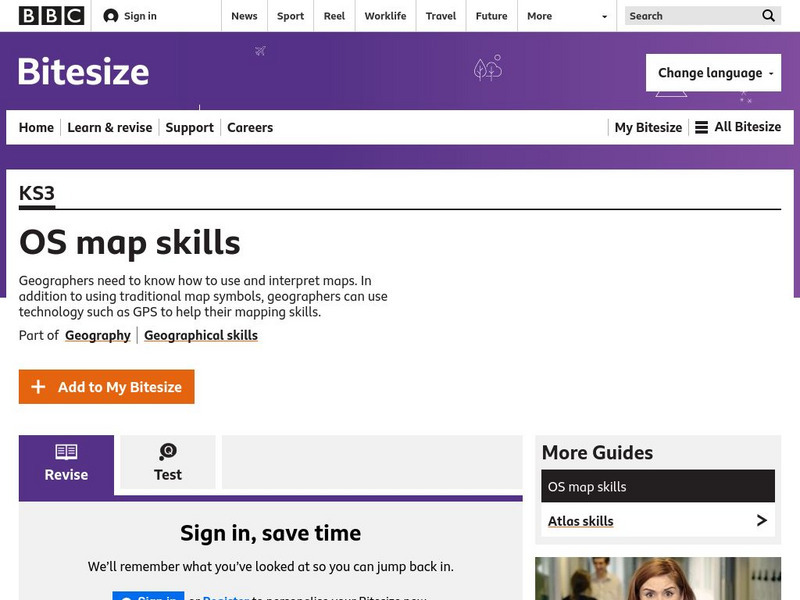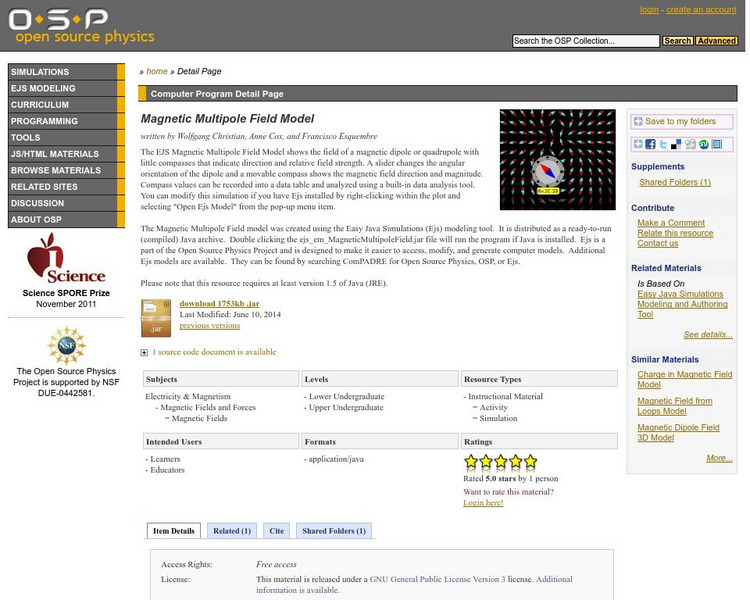Hi, what do you want to do?
CK-12 Foundation
Ck 12: Fourth Grade Science: Earth Science: Introduction to Earth's Surface
[Free Registration/Login may be required to access all resource tools.] Explains how to find a location and direction on Earth's surface. Discusses topography and various landforms and how they form.
BBC
Bbc: Bitesize Geography: Os Map Skills
A short tutorial on mapping tools and how to read maps. Covers features of maps, symbols, the compass, scale, distance, how height is represented, and grid references. Includes multiple-choice quiz at the end.
National Council of Teachers of Mathematics
Nctm: Figure This: Airport Runways
Why are airport runways numbered? The math challenge is to figure out the missing runway number.
The Franklin Institute
Franklin Institute Online: Keep Your Own Weather Journal
This site, which is provided for by the Franklin Institute Online, gives a format for keeping a weather journal.
ClassFlow
Class Flow: Bearings 2
[Free Registration/Login Required] This is a flipchart introducing student to compass bearings. It can be followed by flipchart bearings going further in depth of bearing orientation.
ClassFlow
Class Flow: Maps and Globes
[Free Registration/Login Required] This flipchart reviews map and globe features. The seven continents, four oceans, and city-county-state-country relationships are also explained. Student assessment on directions is included.
TeachEngineering
Teach Engineering: Drawing Magnetic Fields
Students use a compass and a permanent magnet to trace the magnetic field lines produced by the magnet. By positioning the compass in enough spots around the magnet, the overall magnet field will be evident from the collection of arrows...
Discovering Lewis & Clark
Discovering Lewis & Clark: Portage Route Survey
Features an example of a route survey conducted by William Clark in 1805 of the falls, rapids, cascades and ravines from the lower portage camp to the upper falls (Black Eagle) and beyond, using a circumferentor (surveyor's compass) to...
TeachEngineering
Teach Engineering: Visualizing Magnetic Field Lines
In this activity, students take the age old concept of etch-a-sketch a step further. Using iron filings, students begin visualizing magnetic field lines. To do so, students use a compass to read the direction of the magnet's magnetic...
TeachEngineering
Teach Engineering: Plot Your Course Navigation
In this unit, students learn the very basics of navigation, including the different kinds of navigation and their purpose. The concepts of relative and absolute location, latitude, longitude and cardinal directions are discussed, as well...
American Association of Physics Teachers
Com Padre Digital Library: Open Source Physics: Magnetic Multipole Field Model
A simulation which shows the field of a magnetic dipole or quadrupole using compass needles indicating direction and relative field strength. Change the angular orientation of the dipole, and a movable compass shows the magnetic field...
Utah Education Network
Uen: Lesson Plan: Map Trap
Lesson to reinforce maps skills and concepts. Students map locations around their school and use world maps to locate major landmarks.
E-learning for Kids
E Learning for Kids: Science: Antarctica: Penguins: What Is Motion?
What do you know about Emperor penguins? Ernie is researching them and their migration across the continent.















